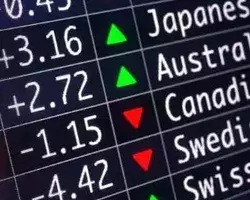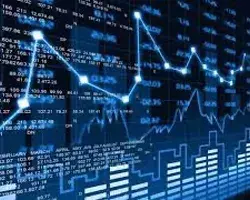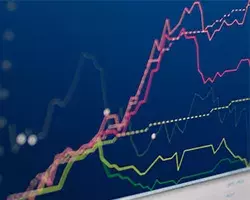How to Use Financial Performance Metrics to Make Smarter Stock Market Investments
Have you ever wondered why some investors consistently succeed in the stock market while others struggle to break even? The answer often lies in one critical skill: understanding financial performance. Research shows that a staggering 75% of investors fail because they overlook fundamental analysis, focusing instead on short-term trends. For beginners, mastering financial metrics like revenue growth, profit margins, and return on equity (ROE) isn’t just important - it’s essential for making informed decisions and avoiding costly mistakes.
Top Mistakes Traders Commonly Make in Technical Analysis: Avoid These Pitfalls for Better Trading Strategy
Did you know that over 70% of traders make the same common mistakes when using technical analysis?
Advanced Wolfe Wave Strategies for Experienced Traders
The Wolfe Wave pattern is a powerful technical analysis tool renowned for its ability to predict market reversals with impressive accuracy. By identifying specific geometric formations within price action, traders can anticipate significant price movements before they occur. This article delves into advanced strategies designed to enhance the efficacy of Wolfe Wave trading, providing experienced traders with refined techniques to optimize their trading outcomes.
Navigating the Economic Landscape: A Guide to Using Leading, Lagging, and Coincident Indicators in Trading
In the ever-shifting tapestry of financial markets, the ability to decipher the subtle cues embedded in economic indicators is a skill that sets apart the astute from the uncertain. In this dynamic realm of financial analysis and trading, understanding the nuances of leading, lagging, and coincident indicators is not merely an advantage but a necessity. These indicators serve as the compass guiding investors and traders through the complex terrain of economic fluctuations and market trends.
What Are Forex Signals, and How Can You Use Them?
If you're looking to enhance your chances of success in the market, Forex signals can be an excellent tool to consider. These signals have the potential to help you achieve higher returns with minimal effort, whether you're a novice trader or an experienced stockbroker. By providing valuable insights into how other traders are approaching the market, forex signals allow you to adopt and emulate their successful trading strategies.
What Is Fibonacci Retracement? Definition & How to Use It
Setting the support and resistance levels is usually a problem for traders. It is especially inconvenient when trying to figure out from the beginning where to place them on the chart: one may think there are no good points to be plotted and it may be better to choose another time frame. Then the chart begins to change direction - and the support that has just been plotted becomes resistance. Immediately the question arises: "Where to build new support and how long to wait for it?"
What Is Money Flow Index (MFI) In Forex Market Trading
One of the most important functions of financial markets, including the foreign exchange market, is the redistribution of money. Through the purchase/sale of stocks, precious metals, and currency, money passes from person to person, from company to company. Thus, in a market economy, a certain balance is naturally achieved, and an equilibrium is established. The inflow or outflow of money is called cash flow.
Standard Deviation Explained: How to Read and Use the Indicator
The Standard Deviation indicator, which is in demand among traders, is an integral part of various profitable trading strategies. Judging by its name, it is clear that it is borrowed from mathematical statistics. The indicator is used in many profitable strategies to estimate the market volatility and find profitable points to open the trades. Let's consider in detail the principle of its work, installation, setup rules, and its readings.
Trading Flat: Definition, How It Works, and Types of Situations
The trend is your friend. That`s what a popular phrase in the world of trading calls to trade only with the trend. But what to do if the market is flat 70% of the time and only 30% of the time it is trending? The answer is that profitable trading is also possible during a flat market. This article will help you to understand what flat is in trading, how to identify it, and how to use it in trading.
Understanding Forex Liquidity
Every trader who plans to trade shares on the stock market or forex instruments needs to understand what liquidity means. After all, a proper understanding of the concept of liquidity can help choose assets that are more promising from the perspective of potential gainfulness and, therefore, increase income. In this article, we will discuss why liquidity is so important and what factors influence it. We will also tell you which formulas can be used to calculate various liquidity ratios and how to apply them in practice.









